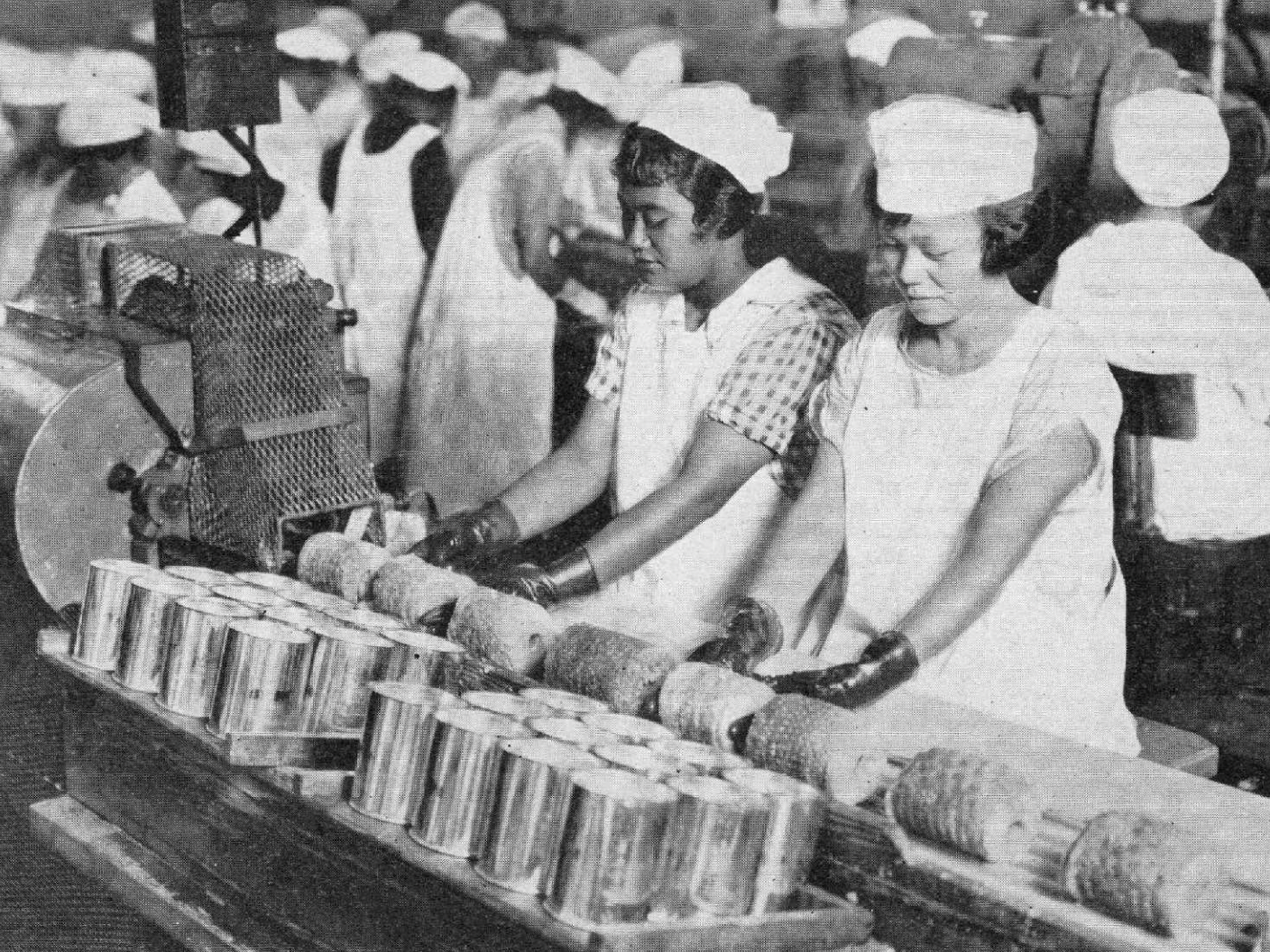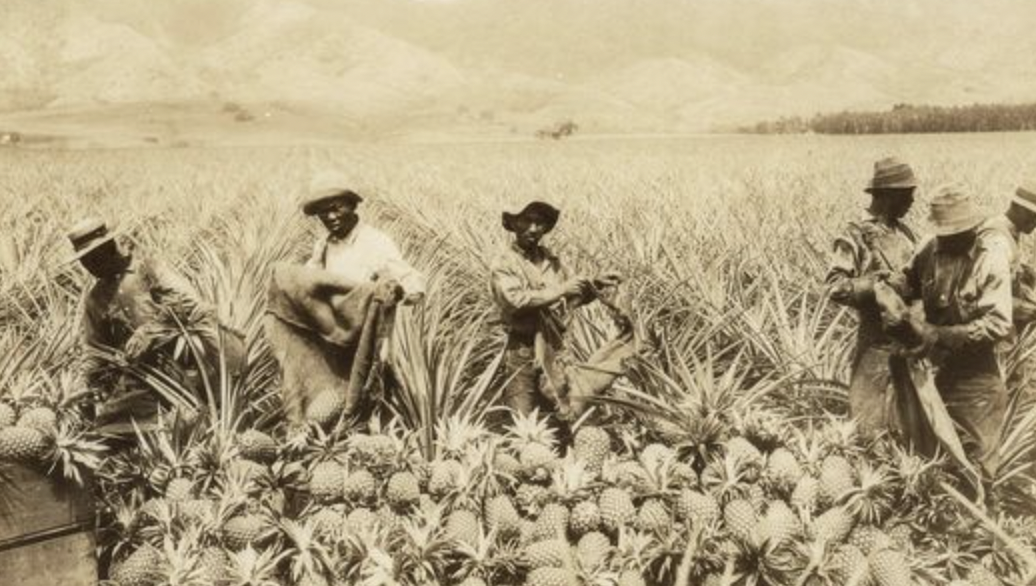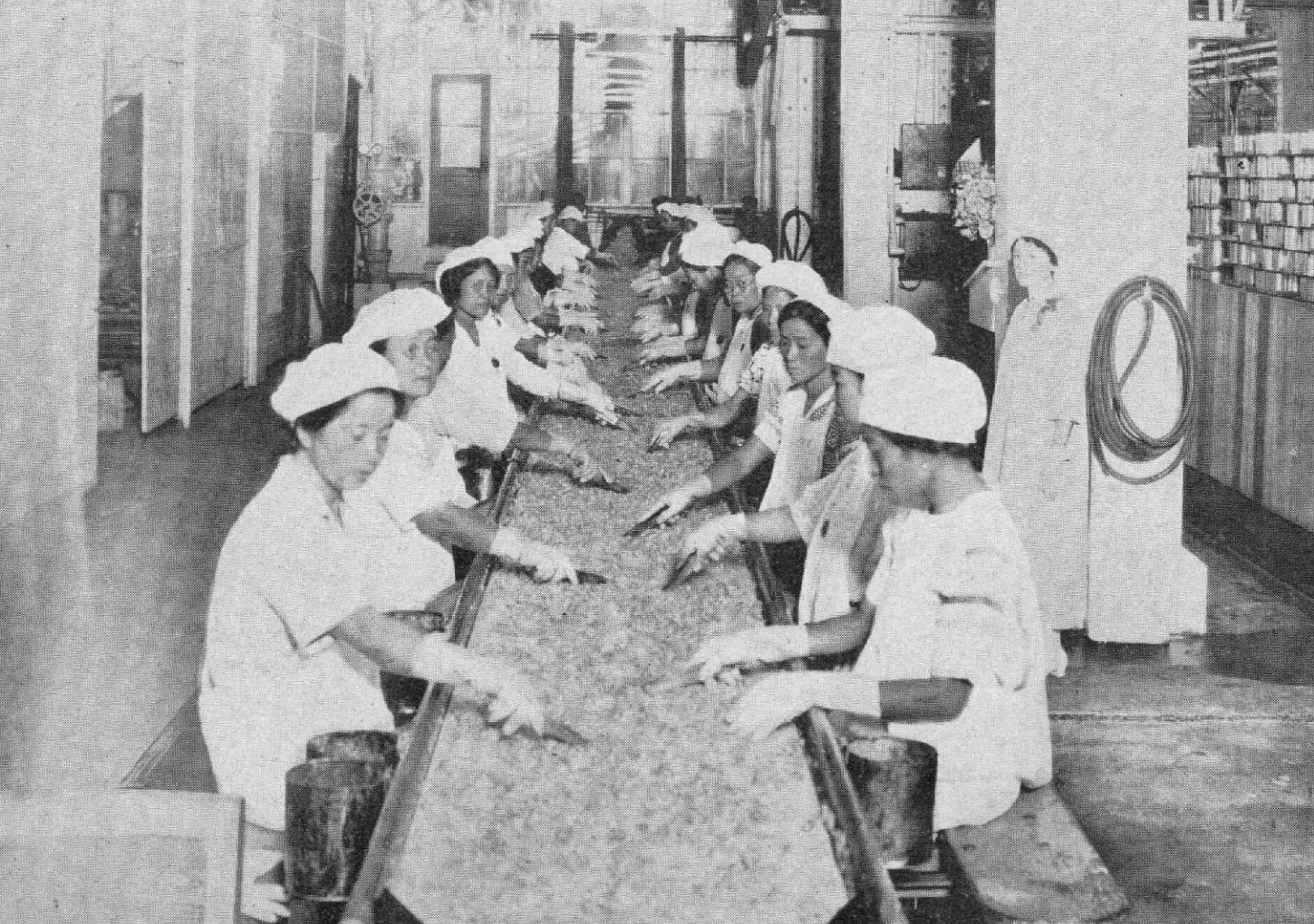Mary Kunāne
Ka Hana Hala

Mānaleo Series
These short clips of native speakers on Ka Leo Hawaiʻi talking about their lives and practices are invaluable windows into our past, our language, and ourselves. Our mahalo kūhohonu goes out to Larry Kimura and Puakea Nogelmeier for their foresight in preserving the voices of these hulu kupuna.
Listen and read along:
1. Press "listen in browser" or the orange arrow on the sound file below (make sure your sound is up).
2. Scroll down and read along in the language of your choice.
3. Repeat as needed.
4. Remember to select "listen in browser" to stay in this site.
Mary Kunāne talks about 35 years in the pineapple industry and the wages she made as both a worker and a manager.
Mary Kunāne (MK): Hele wau i Kauluwela a pau, hele wau i ka hana hala. Kēia manawa, ʻo ka hana hala, maikaʻi, miomio. Ma mua, e ʻokiʻoki ʻoe i ka hala, hele a pau ka hana, ua PULU ʻoe i kēia mea, kēia wai o ka hala, you know.
Kali ana koʻu māmā iaʻu, hola ʻehiku a hola ʻeiwa o ka pō e hana ai. [LK: Auē!] ʻEhā keneka o ka hola. ʻEhā keneka. Kenikeni, ʻaʻole i loaʻa iaʻu. ʻElima keneka. Ke ʻohi mai [i] kaʻu kālā, ʻelua kālā, hoʻokahi kālā.
A, ka hale nō hoʻi i kēlā manawa, emi. Nā mea a pau, aia i waho, hoʻokahi nō wahi lumi. ʻO wau me koʻu makuahine. Ka hale aʻu e uku ana i kēlā manawa, ʻeono nō kālā o ka mahina. ʻO ia ka hoʻomanawanui ʻana oʻu.
Larry Kimura (LK): ʻO ia kēia hana, mea, ka hui o…
MK: Hawaiian Pine.
LK: Hawaiian Pine.
MK: A, ʻo wau ke poʻo. Kanakolu kūmālima wale nō oʻu keneka o ka hola. But, hoʻomanawanui nō. Mai leila koʻu hana ʻana a, ʻo wau ka poʻo nui e nānā ana i nā poʻe…
LK: Lōkihi nō kou hana ʻana?
MK: ʻAe, lōʻihi.
LK: ʻEhia makahiki?
MK: Kanakolu kūmālima makahiki.
LK: Hū! Lōʻihi loa.
MK: ʻAe. A loaʻa nō hoʻi koʻu mea, hoʻomaha, i kēia manawa, but ʻaʻole nui loa ka mea loaʻa mai. But mahalo nō wau.

Femal cannery workers in the 1920s, Honolulu.
Unuhina (Translation):
MK: I went to Kauluwela [School] and when that was done, I went to work in pineapple. Now, pineapple work is good, nice and neat. Before, when you’d cut pineapple, once work was over you’d be soaking in this, uh, this pineapple juice, you know.
My mother would be waiting for me [to come home]. I’d work from seven in the morning until nine at night. [LK: My goodness!] Four cents an hour. Four cents. A dime, I didn’t even make that. [Then I made] five cents. When I’d collect my wages, it would be one or two dollars.
The house I rented at that time was cheap. Everything was outside and there was only one small room. It was me and my mother [living there]. The house I was renting then was six dollars a month. Those are the sorts of things I endured.
LK: This was work with, um, the company…
MK: Hawaiian Pine.
LK: Hawaiian Pine.
MK: [Eventually] I was the head of the workers. I only made 35 cents an hour. But, I got through it with patience. From that time I worked and I was the head, looking after the workers…
LK: Did you work there long?
MK: Yeah, long time.
LK: How many years?
MK: 35 years.
LK: Wow! That’s really long!
MK. Yes. And now I have my retirement, but I don’t get much. But I’m thankful.

He ʻĪnaʻi
As in many other places, the agricultural empire in Hawaiʻi was built on the backs of people who were not paid a living wage. Plantation owners have always claimed to be fair, but the rich history of labor strikes in Hawaiʻi tells us otherwise and reminds us of the impact of unchecked capitalism on those performing the associated labor.
Mary Kunāne's experience of working 12-14 hour days and making four and five cents an hour cutting and canning pineapple is a sobering window into the experiences of women of that time.
The high-paying jobs of that era were held almost exclusively by men. Pineapple canning was among the top areas of employment for women in Hawaiʻi in the 1920s, likely when Mrs. Kunāne had graduated to being the "poʻo" of her team, although she does not give the year she started with Hawaiian Pineapple.

Female cannery workers in the 1920s, Honolulu.
A fascinating report on the employment of women in canneries in Hawaiʻi in the 1920s shows that across the board, women were overworked and underpaid:
"It is apparent that in Honolulu...almost two-fifths of the women, fell in the 54-to-60-hour week that represents roughly the full-time cannery hours. The median of the earnings for this group was practically the same as that for all the women reported. About one-third of the women worked longer than this, and earnings of $11, $12, and $14, judged by the best mainland standards, seem decidedly low for weeks of 60, 66, and 72 hours, the last named being equivalent to 6 days of 12 hours each."
Mary Kunāne worked incredibly hard and supported herself and her mother on her income alone. They lived in a one-room house where all the cooking and washing was done outside. When this kupuna says "But, hoʻomanawanui nō," she is telling us, without saying it directly, that life was not easy, but she persevered, and did so proudly. Having to work that hard just to survive, the quality of her pilina (relationships) with her loved ones must have been part of what sustained her through those years.
Na Hina Kneubuhl i kākau a hoʻonohonoho i kēia moʻolelo.
These pieces are all working interpretations. Should you see a kuhihewa, kiko hewa, or have any sort of manaʻo to share, please email kauamelemele@gmail.com - Mahalo!
Click here to access the full recording on Kaniʻāina.

Femal cannery workers in the 1920s, Honolulu.
Femal cannery workers in the 1920s, Honolulu.

Female cannery workers in the 1920s, Honolulu.
Female cannery workers in the 1920s, Honolulu.

